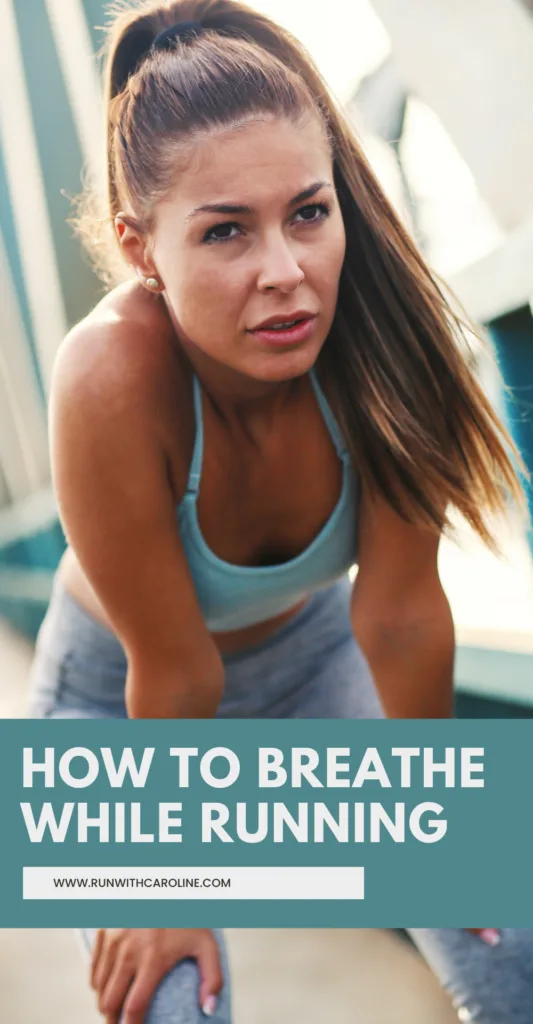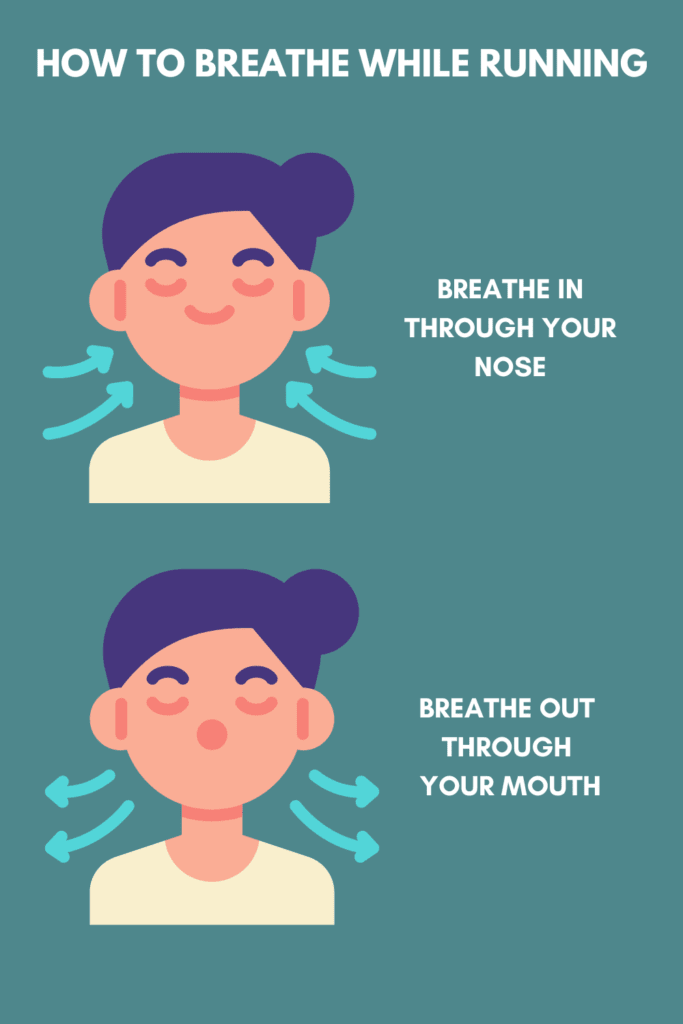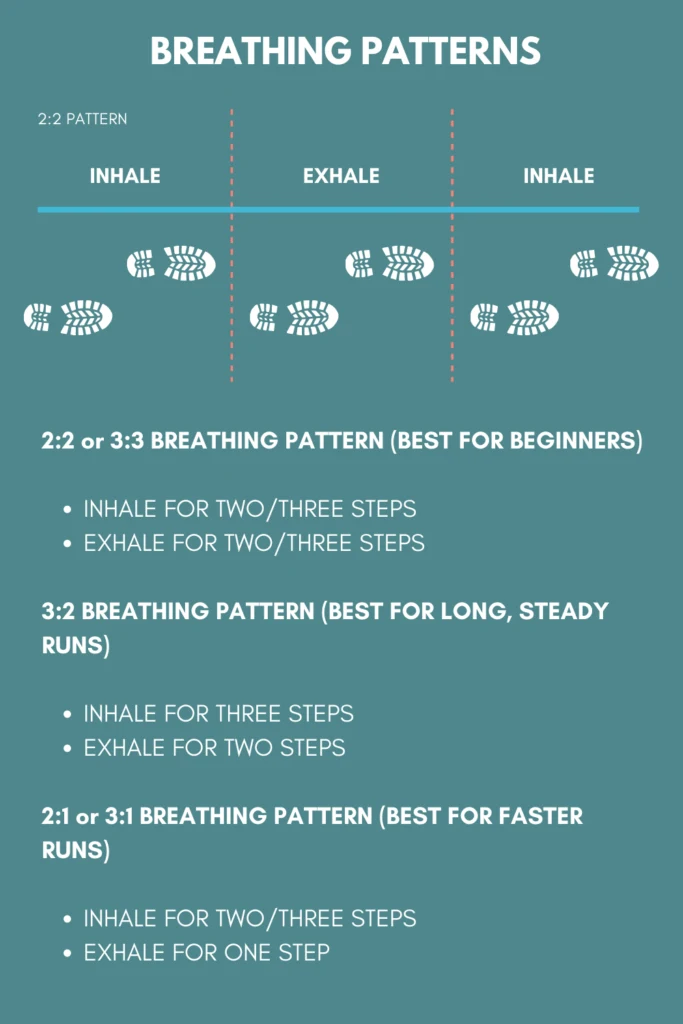Knowing how you breathe while running can make a big difference to your running performance.
But it can be difficult to know how to do it properly.
You may not give a second thought to how you breathe when running. After all, it’s an involuntary process that your body just does naturally.
Oftentimes, when you first start running, it can feel like you can’t catch your breath.
Your heart rate shoots up, your muscles get used to the run, and your face suddenly turns red like a tomato.
As you get more and more miles under your belt, you may be wondering what the proper technique is for breathing when running.
The truth is, there is no perfect way to do it.
However, there are some simple techniques that we’ll share in this guide that will help you boost your performance and reduce common running injuries.
We’ll look at:
- What happens to your breathing when you exercise?
- What are the benefits of proper breathing during exercise?
- Nose breathing vs mouth breathing
- How to breathe properly while running
- How to breathe while running: 4 actionable tips
Ready?
Let’s go!

What happens to your breathing when you exercise?
Research tells us that during exercise the heart and lungs play essential roles during exercise.
They work together to bring oxygen into the body, provide energy, remove carbon dioxide and remove any waste products produced during the energy creation process.
When you exercise, your body uses more oxygen and produces more carbon dioxide, so your body works harder to cope with this extra demand.
Your breathing increases from about 15 times a minute when you are resting to about 40 to 60 times a minute during exercise.
This is a huge leap! This translates to about 12 litres of air when resting to 100 litres of air during exercise.
Your blood circulation also speeds up during exercise to ensure enough oxygen is flowing to the muscles that need it most so they can keep moving.
This may explain why the first mile of a run is always the hardest.
There is a rapid increase in oxygen demand to your entire body so your heart works harder to keep up with your whole body.
Related: What does running do for your body? 10 benefits of running

Related: Heart rate when running: The complete guide
What are the benefits of proper breathing during exercise?
Proper breathing during exercise, especially for running, has the following benefits:
- Improves athletic performance
- Increases your VO2 Max
- Allows you to run for longer
- Promotes ‘feel good’ emotions
#1 Improves athletic performance
Regular exercise using proper breathing techniques can increase the strength and function of your muscles, making them more efficient.
Your muscles will therefore require less oxygen and will produce less carbon dioxide.
This will immediately reduce the amount of air you will need to breathe in and out for a given exercise.
Training also improves your circulation and strengthens your heart.
#2 Increases your VO2 Max
VO2 Max (maximal oxygen consumption) is the maximum amount of oxygen a person can intake during exercise.
In other words, it is the maximum or optimum rate at which the heart, lungs and muscles can effectively use oxygen during exercise.
It has long been considered as the single best indicator of cardiovascular/aerobic fitness.
Research tells us that people who possess a low VO2 Max have an increased chance of premature death, as well as the development of numerous chronic diseases.
#3 Allows you to run for longer
By breathing more efficiently, you will be getting more oxygen into your body which is the best way to combat fatigue during a run.
Breathing fuels the body with the oxygen it needs to keep moving your muscles.
If your body struggles to get the adequate amount of oxygen, you will see an increase in lactic acid in the muscles, which causes cramping and fatigue.
#4 Promotes ‘feel good’ emotions
Studies show that efficient breathing while running increases positive emotions in runners, leading them to run stronger and longer.
Breathing exercises like diaphragmatic breathing have also been shown to reduce symptoms of mood disorders like anxiety and depression.
Related: How to get a runner’s body: Characteristics + 6 training tips
Nose breathing vs mouth breathing
Research tells us that the most efficient way to breathe during exercise is through your nose and out through your mouth.
The nose is built with a specific purpose to support the respiratory system, whereas the mouth is designed to start the digestive process.
Breathing through your nose has several benefits compared with mouth breathing:
Nose breathing has been shown to:
- Filter allergens and foreign bodies from entering the respiratory system.
- Add moisture and warmth to the inhaled air, ensuring a smoother entry to the lungs.
- Allow for more oxygen to get to muscles and tissues.
- Increase diaphragmatic function.
- Activate the part of the nervous system that supports rest, recovery and digestion.

One 2018 study carried out on 10 recreational runners found that the respiratory rate of the runners, their breaths per minute and their ratio of oxygen intake to carbon dioxide output decreased during nasal breathing.
The study added that the lower breath rate used during nasal breathing allowed more time for oxygen to get into the bloodstream.
It’s worth noting that your body will switch to mouth breathing during high intensity training like sprinting to allow for as much oxygen to enter the body as possible.
Most people will be able to maintain nose breathing up until around 85% of their VO2 Max effort.
Related: Running 3 miles a day: Benefits + how to start

How to breathe properly while running
One of the best ways to breathe properly while running is to have a breathing pattern that coordinates with your footstrike.
This essentially means you need to inhale for a few steps and breathe out for a few steps.
There is research that shows a longer inhale brings more stability to your core.
This is because when you exhale, the muscles in your diaphragm relax, therefore decreasing stability.
So it’s best to hit the ground when you inhale as your body will be at its most stable then.
There are different types of breathing patterns according to pace.
You need to breathe slightly differently on faster runs compared with slow, steady runs, as your muscles will be working harder and you’ll be expending more energy.
There will be a point when you can no longer comfortably inhale or exhale as the pace of your run will be so challenging.
Here are the best breathing patterns according to pace:
Best for beginners: 2:2 or 3:3 breathing pattern
This breathing pattern is recommended for beginner runners.
Inhale for two/three steps and exhale for two/three steps.
Best for long, steady runs: 3:2 breathing pattern
For long, steady runs where you are running at a continuous pace, the 3:2 breathing pattern is best.
On a long run, you might count it this way: “in-2-3,” “out-2,” “in-2-3,” “out-2,” and so forth.
Concentrate on a continuous breath as you inhale over the three counts and a continuous breath as you exhale.
Try not to mimic the breathing you would do in a yoga session, for example, as it will be too slow.
Best for quicker runs: 2:1 or 3:1 breathing pattern
For faster runs, you will need to switch to a different breathing pattern.
The 2:1 or 3:1 breathing pattern is recommended for faster workouts like speed training.
For interval training, for example, you’ll need to switch between a 2:1 and 2:2 or 3:1 and 3:2 breathing pattern when you stop and start.

Related: 8 beginner Pilates exercises for runners
How to breathe while running: 4 actionable tips
Now you know more about how to breathe while running, here are 4 actionable tips.
#1 Practice diaphragmatic breathing
You may have heard about this technique when people talk about the breathing patterns of opera singers.
Take a big deep breath. As you inhale, your diaphragm will contract and move downward.
You will feel your rib cage expand, which draws air into your lungs.
The more air you inhale, the more oxygen is available to be fed into your lungs to your working muscles.
Many runners when they first start running take short breaths and therefore underuse their diaphragm.
When you take short breaths, you rely too much on your chest muscles and therefore take in less oxygen.
You also underuse your intercostal muscles (the muscles in between your ribs) so they become smaller and quick to fatigue.
It’s important to strengthen these so they can fully support the breathing process.
To train yourself to breathe from your belly, practice belly breathing lying down, sitting down and standing up.
- Lie down on your back and keep your upper chest and shoulders still.
- Focus on raising your belly as you inhale, lower your belly as you exhale.
- Inhale and exhale through BOTH your nose and mouth.
General health advice out there is that you should breathe from your diaphragm at all times, whether you’re running, walking or sleeping.
If you practice yoga, you’re probably used to breathing deeply anyway.
Breathing deeply is a great way to relieve stress and anxiety symptoms, so what better way to start!
Related: What does running do for your body? 10 benefits of running
#2 Build up your endurance
Proper breathing while running has a lot to do with your endurance.
If you’re at the start of your running journey, you’ll probably still be building up your endurance.
Therefore, running may still feel quite laboured for you.
This in turn affects your breathing, and can often lead to a side stitch when running.
Take the steps to increase your endurance and stamina, which will undoubtedly happen over time as you get more runs under your belt.
Related: 8 ways to run for longer without getting so tired
#3 Ditch the music
When learning to breath when running, we recommend you ditch the music so you can fully concentrate on your breathing.
The beats from the music will most likely distract you.
Ditching the music can also help you achieve a more mindful run, without the noise and distraction.
It may just be what you need to unwind and really focus on your breathing.
Related: How to practice mindful running: 6 top tips
#4 Don’t focus on it too much
When you start using breathing patterns like the ones in this guide on your runs, the temptation is to focus on it too much and eventually get distracted by it.
You’ll need to focus on it to start off with in order to get into a rhythm, but don’t worry about it too much for the rest of your run.
The idea is that you start, evaluate your breathing as you run (change it if required) and check it at random intervals to make sure you’re on track.
Over time it will (hopefully) become second nature and more automatic for you.
As you use rhythmic breathing in your training and racing and tune in to your breathing efforts and paces.
You will learn to run from within, in complete harmony with your body.
You will discover the natural rhythms of your running, which will lead you to improved performances but also to experience the joy of running.
- 5 things I wish I’d known before returning to running - March 3, 2024
- Running 20 minutes a day: Benefits + how to start - January 27, 2024
- How to run your first 2 hour half marathon - January 16, 2024
